Discover 10 stunning naturally Blue leaf trees for your garden in 2024. Learn about blue spruce, blue atlas cedar, and more rare species. Expert tips on care and cultivation included.
Blue leaf trees are nature’s way of adding a touch of magic to our landscapes. These rare and captivating specimens bring a unique, cool hue to gardens and outdoor spaces, creating eye-catching focal points and conversation starters. In this comprehensive guide, we’ll explore the world of naturally blue leaf trees, showcasing the most striking varieties and providing expert advice on how to incorporate them into your landscape design.
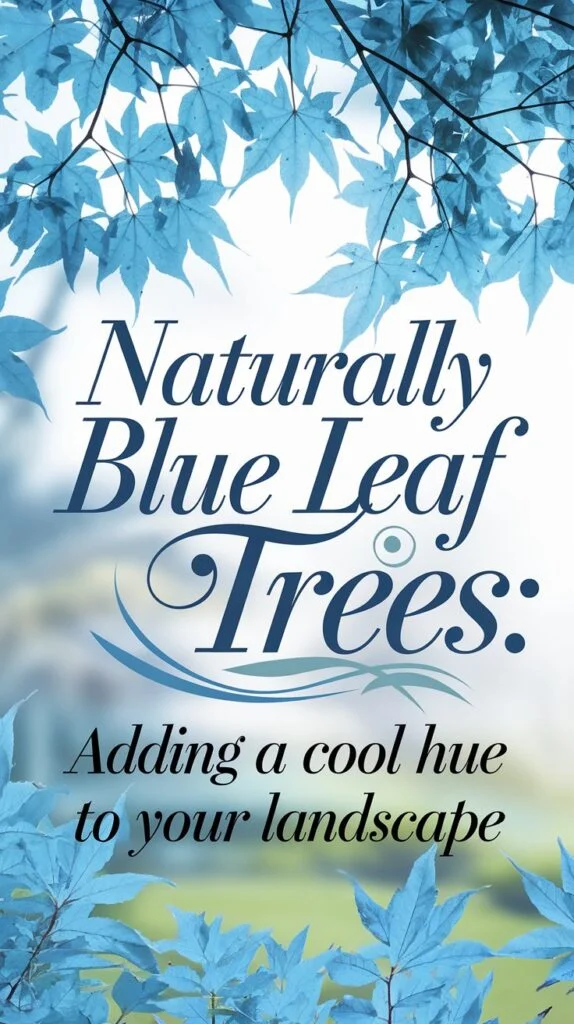
As a dendrologist with over two decades of experience studying and cultivating rare tree species, I’m thrilled to share my knowledge of these azure-tinted wonders. Let’s dive into the fascinating world of blue foliage plants and discover how they can transform your outdoor space!
Why Choose Blue Leaf Trees?
Before we explore specific varieties, let’s consider the benefits of incorporating blue leaf trees into your landscape:
- They create stunning visual contrast with traditional green foliage
- Blue hues can make a space feel cooler and more relaxing
- Many blue leaf trees are evergreen, providing year-round interest
- They often have unique textures that add depth to the landscape
- Blue leaf trees can increase property value due to their rarity and beauty
Now, let’s explore 10 naturally blue leaf trees that can bring a cool, ethereal beauty to your garden in 2024.
10 Captivating Blue Leaf Trees for Your Landscape
1. Blue Spruce (Picea pungens)
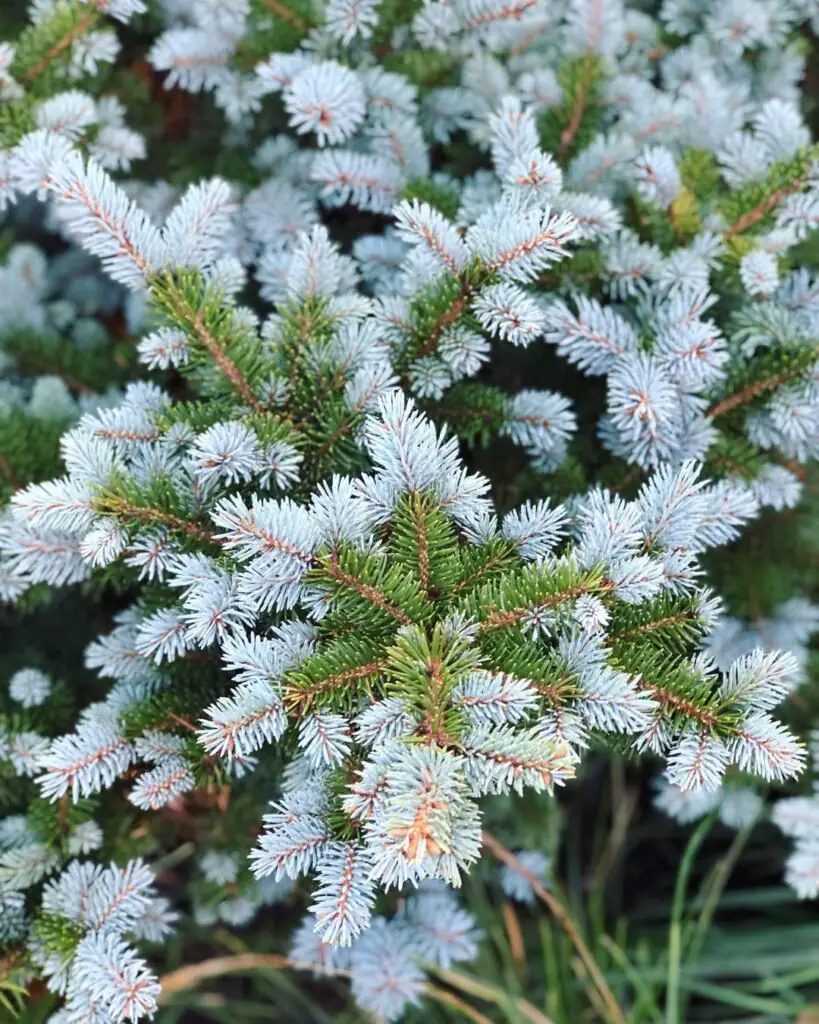
Height: 30-60 feet USDA Hardiness Zones: 2-7
The blue spruce is perhaps the most well-known blue leaf tree, prized for its silvery-blue needles.
2024 Trend: Dwarf varieties of blue spruce are gaining popularity for smaller gardens and container planting.
Growing Tip: Plant in full sun for the best blue color development.
2. Blue Atlas Cedar (Cedrus atlantica ‘Glauca’)
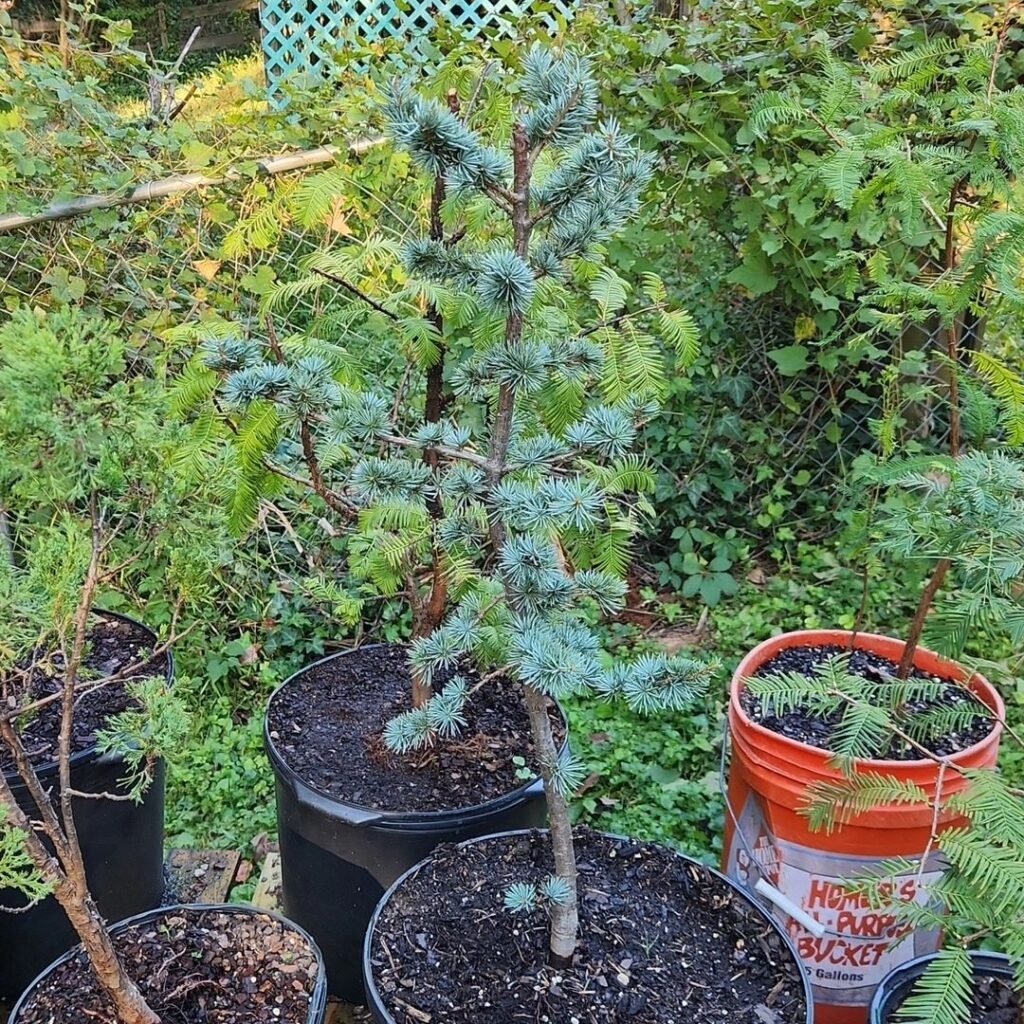
Height: 40-60 feet USDA Hardiness Zones: 6-9
This majestic tree offers striking blue-green needles and an impressive architectural form.
2024 Update: New research shows improved drought tolerance in blue atlas cedars, making them increasingly popular in water-wise landscaping.
Growing Tip: Provide ample space for this tree to reach its full, spreading potential.
3. Blue Chinese Fir (Cunninghamia lanceolata ‘Glauca’)
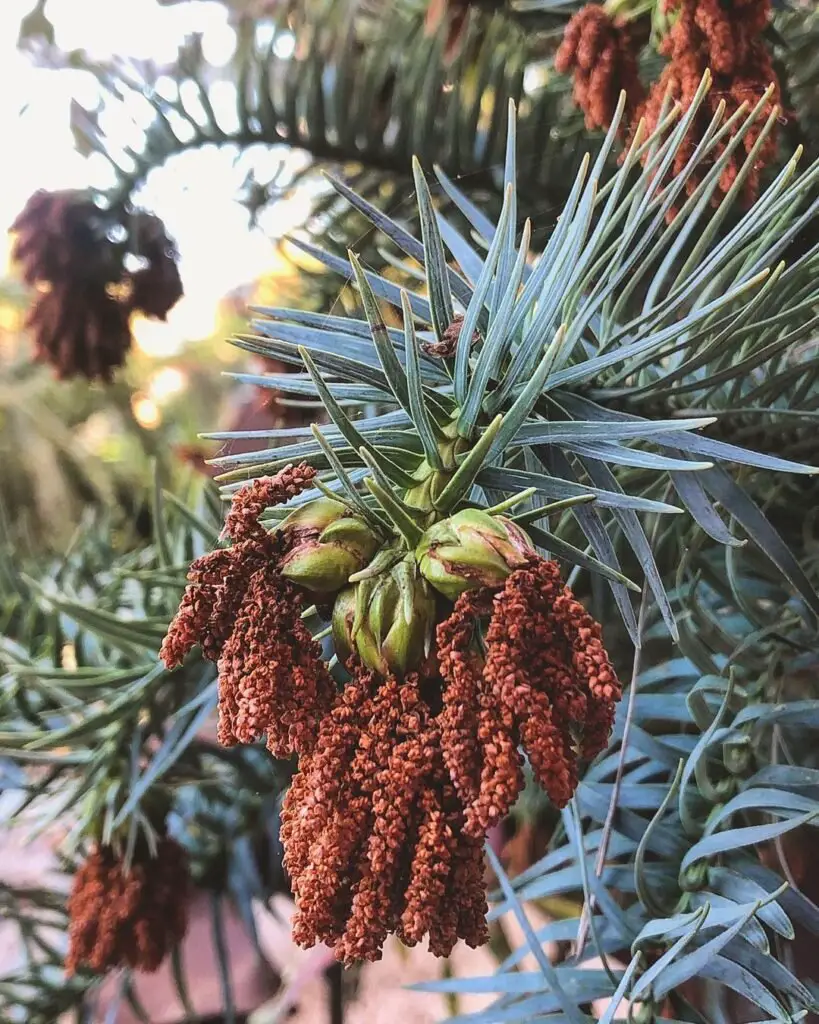
Height: 30-50 feet USDA Hardiness Zones: 7-9
This unique conifer offers blue-green, lance-shaped leaves and an interesting layered growth habit.
2024 Insight: Increasing interest in Asian-inspired gardens is boosting the popularity of this species.
Growing Tip: Plant in a sheltered location to protect from harsh winds.
4. Blue Deodar Cedar (Cedrus deodara ‘Blue Sphinx’)
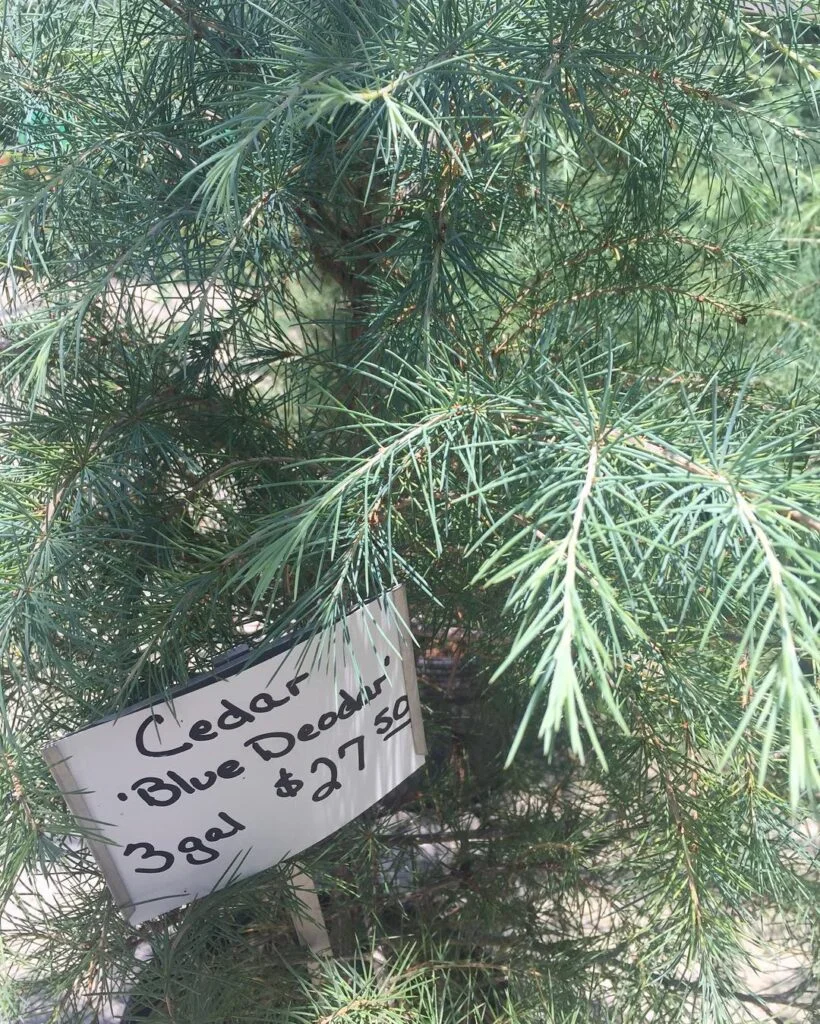
Height: 40-50 feet USDA Hardiness Zones: 7-9
Known for its weeping habit and intense blue needles, this tree adds drama to any landscape.
2024 Trend: Vertical gardening enthusiasts are using columnar varieties of blue deodar cedar in innovative designs.
Growing Tip: Ensure well-draining soil to prevent root rot.
5. Blue Japanese White Pine (Pinus parviflora ‘Glauca’)
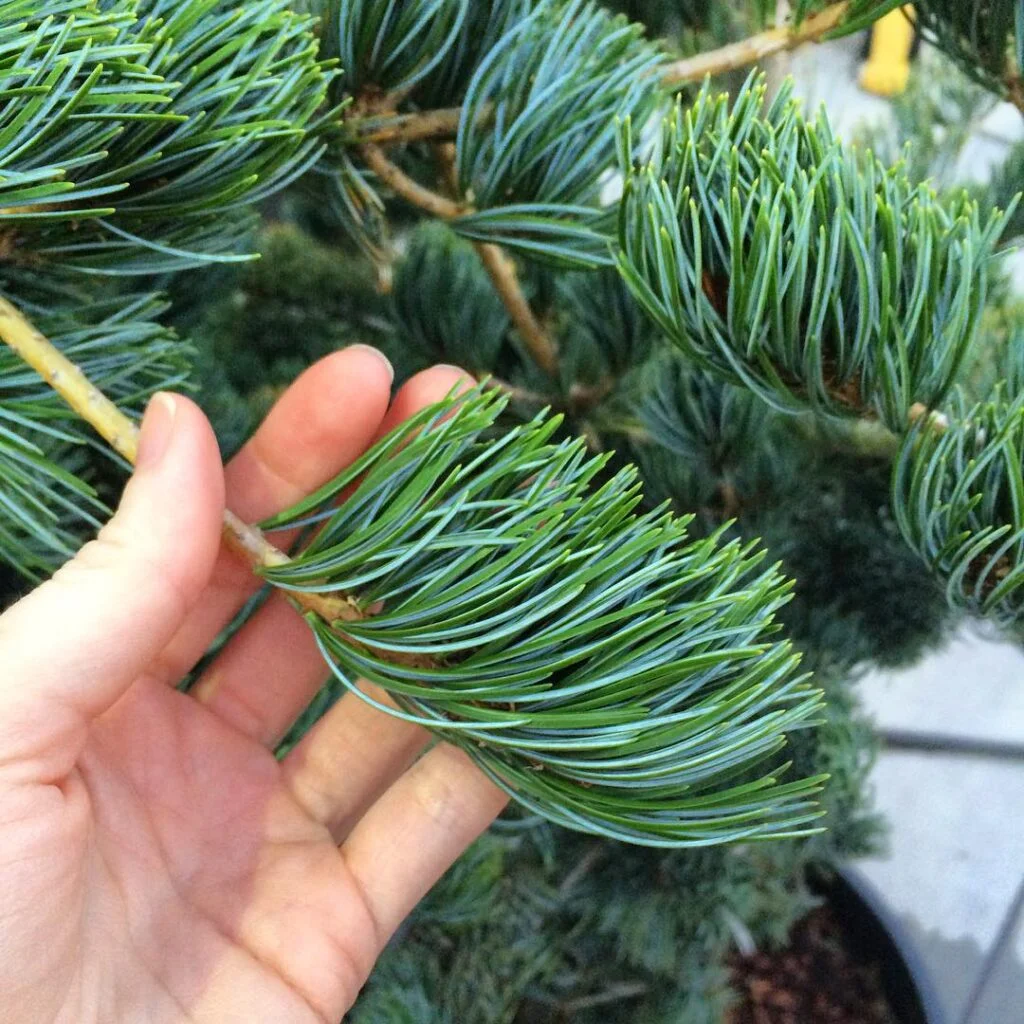
Height: 30-40 feet USDA Hardiness Zones: 5-7
This elegant pine offers clusters of blue-green needles and an attractive, layered form.
2024 Innovation: New grafting techniques are producing more compact varieties suitable for urban gardens.
Growing Tip: Prune regularly to maintain its sculptural shape.
6. Blue Eucalyptus (Eucalyptus pulverulenta)
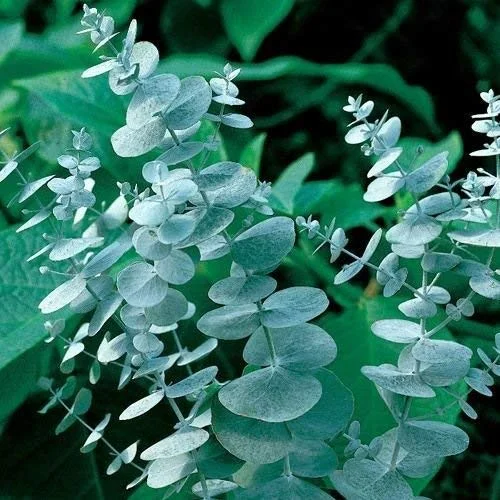
Height: 20-30 feet USDA Hardiness Zones: 8-11
Also known as silver-leaved mountain gum, this tree offers round, silvery-blue leaves and aromatic properties.
2024 Update: Increasing interest in aromatherapy is driving demand for blue eucalyptus in sensory gardens.
Growing Tip: Provide protection from strong winds to prevent leaf damage.
7. Silver Buttonwood (Conocarpus erectus var. sericeus)
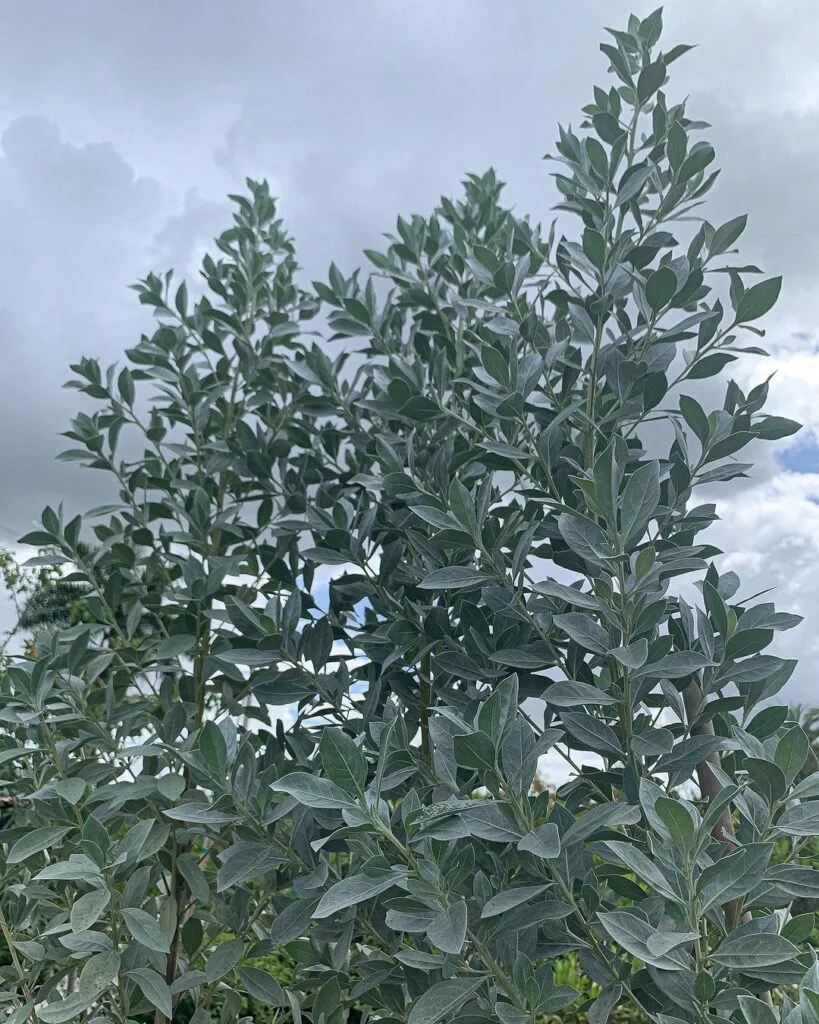
Height: 20-40 feet USDA Hardiness Zones: 10-11
While not truly blue, this tree’s silvery-blue leaves create a similar effect in the landscape.
2024 Trend: Rising sea levels are increasing interest in salt-tolerant trees like silver buttonwood for coastal landscaping.
Growing Tip: Ideal for coastal gardens due to its high salt tolerance.
8. Blue Ice Cypress (Cupressus arizonica var. glabra ‘Blue Ice’)
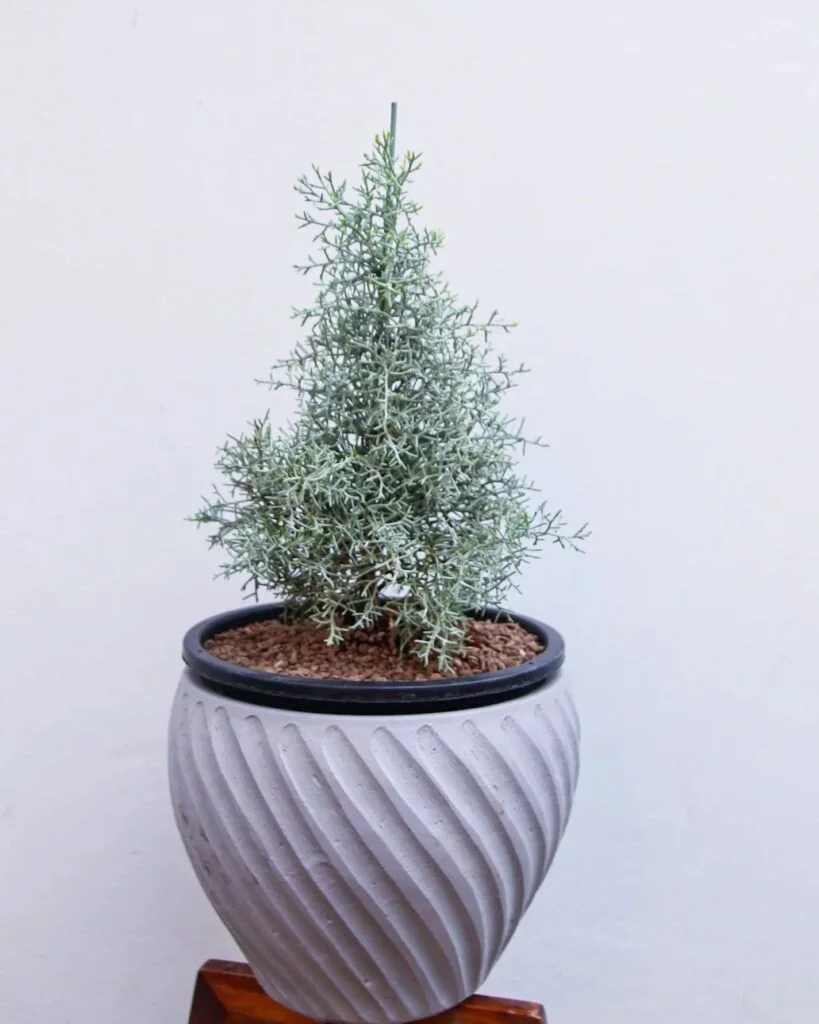
Height: 20-30 feet USDA Hardiness Zones: 6-9
This striking cypress offers intense blue foliage and a compact, pyramidal form.
2024 Research: Studies on the air-purifying qualities of blue ice cypress are showing promising results for urban environments.
Growing Tip: Plant in full sun for the best blue color development.
9. Blue Lignum Vitae (Guaiacum officinale)
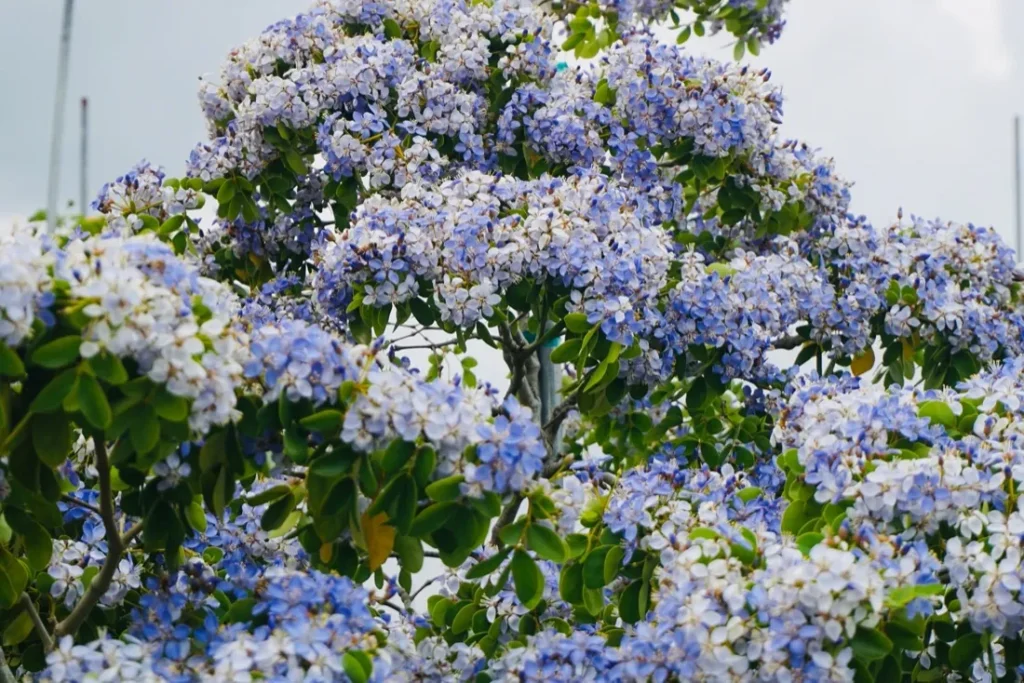
Height: 15-20 feet USDA Hardiness Zones: 10-12
This slow-growing tree offers deep blue-green leaves and stunning blue flowers.
2024 Insight: Increasing interest in medicinal plants is drawing attention to the historical uses of blue lignum vitae.
Growing Tip: Provide well-draining soil and protect from frost in cooler regions.
10. Blue Jacaranda (Jacaranda mimosifolia)

Height: 25-50 feet USDA Hardiness Zones: 9-11
While known for its lavender flowers, the jacaranda’s fern-like foliage has a blue-green tint.
2024 Trend: Climate change adaptation is expanding the suitable growing range for jacarandas in some regions.
Growing Tip: Plant where flower litter won’t be a problem, as blooms can create a mess.
Best Practices for Growing Blue Leaf Trees
To ensure the health and vibrancy of your blue leaf trees:
- Choose species suitable for your USDA hardiness zone and microclimate.
- Provide appropriate sunlight exposure – many blue varieties need full sun for best color.
- Ensure well-draining soil to prevent root issues.
- Water deeply but infrequently to encourage deep root growth.
- Fertilize sparingly, as over-fertilization can diminish blue coloration.
Embracing the Blue Hue in Your Landscape
Incorporating naturally blue leaf trees into your landscape offers a unique way to add color, texture, and interest to your outdoor spaces. From the familiar blue spruce to the exotic blue lignum vitae, there’s a blue-tinted tree to suit various climates and design aesthetics.
Remember, successful tree cultivation is about matching the right species to your specific environmental conditions and maintenance capabilities. Don’t hesitate to consult with local arborists or extension offices for personalized advice on growing blue leaf trees in your area.
For more information on unique tree species and landscape design, visit resources like the Arbor Day Foundation or the International Society of Arboriculture. Happy planting, and may your landscape be enhanced by the cool, calming presence of blue leaf trees!
For more gardening tips and plant care guides, visit usagardenhub.com

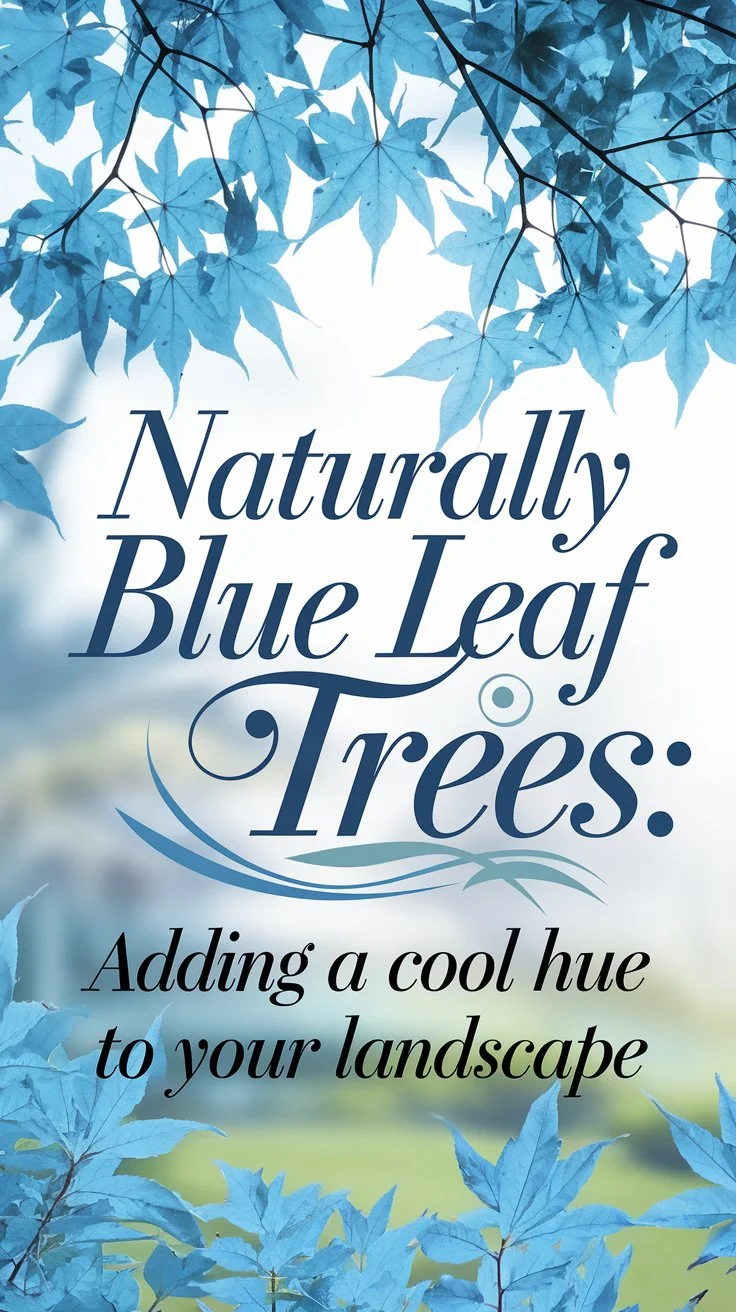



One comment on “Naturally Blue Leaf Trees: Adding a Cool Hue to Your Landscape”